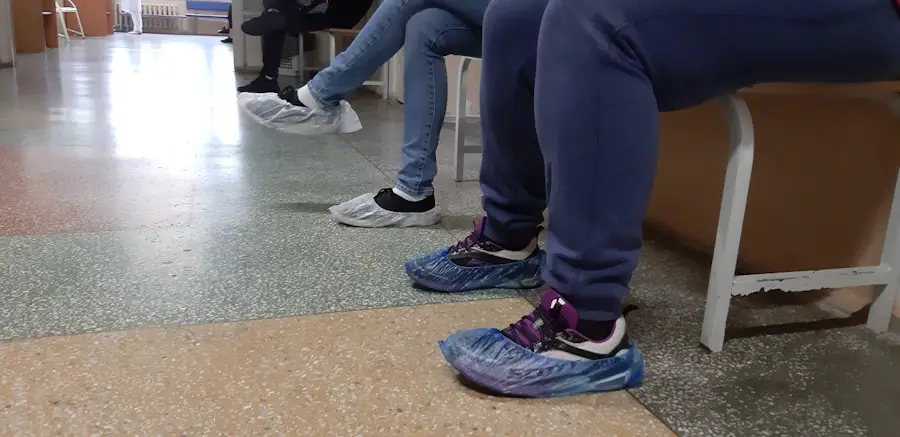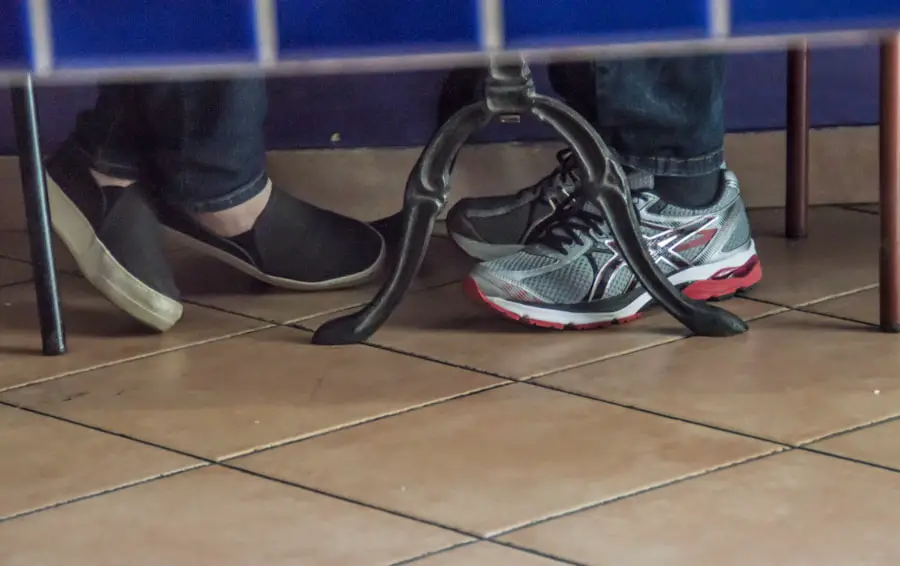Selecting the appropriate hiking shoes is a critical decision for anyone who enjoys exploring the great outdoors. The right footwear can significantly enhance your hiking experience, providing comfort, support, and protection against the elements. Poorly chosen shoes can lead to blisters, discomfort, and even injuries, which can turn an enjoyable trek into a painful ordeal.
The terrain you plan to traverse, the duration of your hike, and the weather conditions all play a vital role in determining the best type of shoe for your needs. Moreover, the psychological aspect of hiking should not be overlooked. When you know you have the right shoes on your feet, you can focus on the beauty of nature around you rather than being preoccupied with discomfort or pain.
This mental clarity allows for a more immersive experience, enabling you to appreciate the sights and sounds of the wilderness. Therefore, investing time and resources into finding the right hiking shoes is not just about physical comfort; it’s about enhancing your overall hiking experience.
Key Takeaways
- Choosing the right hiking shoes is crucial for comfort, support, and injury prevention
- Hiking shoes come in low-cut, mid-cut, and high-cut styles, each suited for different terrains and activities
- Look for features like waterproofing, traction, and breathability when selecting hiking shoes
- Top hiking shoe brands include Merrell, Salomon, and Keen, known for their quality and durability
- Different terrains and activities require specific hiking shoes, such as rocky, wet, and dry terrain, and day hikes, backpacking, and trail running
Types of Hiking Shoes: Low-Cut, Mid-Cut, and High-Cut
Hiking shoes come in various styles, each designed for specific types of terrain and hiking conditions. Low-cut shoes are typically lightweight and flexible, making them ideal for day hikes on well-maintained trails. They offer minimal ankle support but allow for greater freedom of movement, which can be advantageous when navigating rocky paths or uneven surfaces.
However, their lack of height means they may not provide adequate protection against ankle injuries on more challenging terrains. Mid-cut shoes strike a balance between support and flexibility. They offer more ankle coverage than low-cut options while still being relatively lightweight.
This makes them suitable for moderate hikes where some degree of ankle protection is beneficial but where heavy boots would be overkill. Mid-cut shoes are versatile and can handle a variety of terrains, making them a popular choice among hikers who enjoy diverse trails. High-cut shoes or boots provide maximum ankle support and protection, making them ideal for rugged terrains and multi-day backpacking trips.
These shoes are often made from durable materials that can withstand harsh conditions, including mud, snow, and rocky paths. While they tend to be heavier and less breathable than their lower counterparts, their robust construction offers peace of mind for those venturing into more challenging environments.
Features to Look for in Hiking Shoes: Waterproofing, Traction, and Breathability

When selecting hiking shoes, several key features should be prioritized to ensure optimal performance on the trail. Waterproofing is one of the most critical attributes, especially for hikers who frequently encounter wet conditions or muddy trails. Many hiking shoes incorporate waterproof membranes like Gore-Tex, which allow moisture to escape while preventing water from entering.
This feature is essential for keeping your feet dry and comfortable during long hikes in unpredictable weather. Traction is another vital consideration when choosing hiking footwear. The outsoles of hiking shoes are designed with specific tread patterns that enhance grip on various surfaces.
Shoes with deep lugs provide better traction on rocky or uneven terrain, while those with flatter soles may be more suitable for smoother trails. The material used in the outsole also plays a role; rubber compounds with high friction coefficients can significantly improve grip and stability on slippery surfaces. Breathability is equally important, particularly during warmer months or on strenuous hikes.
Shoes that allow for adequate airflow help regulate temperature and moisture levels inside the shoe, reducing the risk of blisters and discomfort. Many manufacturers use mesh panels or breathable linings to enhance ventilation without compromising durability. A well-ventilated shoe can make a significant difference in maintaining comfort over long distances.
Top Hiking Shoe Brands: Merrell, Salomon, and Keen
| Brand | Number of Models | Price Range | Customer Rating |
|---|---|---|---|
| Merrell | Over 100 | 80 – 200 | 4.5/5 |
| Salomon | Around 50 | 100 – 250 | 4.7/5 |
| Keen | Over 70 | 90 – 220 | 4.4/5 |
Several brands have established themselves as leaders in the hiking shoe market, each offering unique features and technologies that cater to different hiking needs. Merrell is renowned for its commitment to comfort and performance. Their shoes often feature cushioned insoles and supportive midsoles that provide excellent shock absorption.
Merrell’s Moab series is particularly popular among casual hikers for its versatility and reliability on various terrains. Salomon is another brand that has garnered a loyal following among outdoor enthusiasts. Known for their innovative designs and advanced technologies, Salomon shoes often incorporate features like Contagrip outsoles for superior traction and Sensifit systems that ensure a snug fit.
Their X Ultra series is favored by many for its lightweight construction and excellent stability on rugged trails. Keen stands out for its focus on toe protection and comfort. Many of their hiking shoes come with a distinctive toe cap that shields your feet from rocks and other hazards on the trail.
Keen’s Targhee series is particularly well-regarded for its waterproof capabilities and all-terrain performance, making it a favorite among hikers who frequently encounter wet conditions.
Best Hiking Shoes for Different Terrains: Rocky, Wet, and Dry
Choosing the right hiking shoes also depends heavily on the type of terrain you will be navigating. For rocky terrains, shoes with robust outsoles featuring deep lugs are essential for maintaining grip and stability. A shoe like the Salomon X Ultra 3 GTX offers excellent traction on rocky surfaces while providing necessary ankle support through its mid-cut design.
In wet conditions, waterproof shoes are non-negotiable. The Merrell Moab 2 Waterproof shoe is an excellent choice as it combines breathability with a waterproof membrane to keep your feet dry without sacrificing comfort. Its aggressive tread pattern ensures reliable traction on slippery surfaces, making it ideal for muddy trails or stream crossings.
For dry terrains, lightweight shoes with good ventilation are preferable. The Altra Lone Peak series is known for its breathability and comfort on dry trails. These shoes feature a wide toe box that allows your toes to splay naturally while providing ample cushioning for long-distance hikes in arid environments.
Hiking Shoes for Different Activities: Day Hikes, Backpacking, and Trail Running

The intended activity also influences the type of hiking shoe you should choose. For day hikes, lightweight low-cut or mid-cut shoes are often sufficient. They provide enough support for short excursions while allowing for quick movements over well-maintained trails.
The Merrell Moab 2 Ventilator is an excellent option for day hikers seeking comfort without excessive weight. Backpacking requires more robust footwear due to the added weight of gear and longer distances covered each day. Mid-cut or high-cut boots are typically recommended to provide additional ankle support and stability under load.
The Oboz Bridger Mid BDry boot is a popular choice among backpackers for its durability and waterproof features. Trail running has gained popularity among outdoor enthusiasts looking to combine speed with nature exploration. Trail running shoes are designed to be lightweight and flexible while still offering adequate grip on uneven surfaces.
The Hoka One One Speedgoat series is well-regarded in this category for its cushioning and traction, making it suitable for both trail running and fast-paced hiking.
Tips for Properly Fitting Hiking Shoes
Achieving the perfect fit is crucial when selecting hiking shoes to ensure comfort during long treks. One essential tip is to try on shoes at the end of the day when your feet are slightly swollen from daily activities; this will give you a more accurate representation of how they will feel during a hike. Ensure there’s enough room in the toe box so that your toes can move freely without feeling cramped.
Another important aspect to consider is the width of the shoe. Many brands offer different width options to accommodate various foot shapes. It’s advisable to walk around in the shoes for several minutes in-store to assess comfort levels; pay attention to any pressure points or areas that feel too tight.
Additionally, wearing the socks you plan to use during hikes can help ensure a proper fit. Lastly, consider the break-in period of your chosen footwear. Some hiking shoes may require time to mold to your feet before they become truly comfortable.
Gradually wearing them on shorter walks or hikes can help ease this process and prevent blisters during longer excursions.
Maintenance and Care for Hiking Shoes
Proper maintenance of hiking shoes can significantly extend their lifespan and performance capabilities. After each hike, it’s essential to clean off any dirt or mud that may have accumulated on the shoes’ surface. Using a soft brush or cloth along with mild soap can help remove debris without damaging the materials.
Drying your shoes properly is equally important; avoid placing them near direct heat sources as this can warp or damage the materials. Instead, let them air dry at room temperature away from sunlight. If your shoes are waterproof, periodically treating them with a suitable waterproofing spray can help maintain their protective qualities.
Inspecting your shoes regularly for signs of wear is also crucial; check the soles for any signs of separation or excessive wear that could compromise traction. Replacing insoles when they become worn out can also enhance comfort and support during hikes. By taking these steps to care for your hiking footwear, you can ensure they remain reliable companions on all your outdoor adventures.
If you’re planning a hiking trip, it’s important to have the right gear, including a good pair of hiking shoes. A related article on rechargeable hand warmers for travel can also be beneficial for keeping your hands warm during cold hikes. Having the right equipment, such as lightweight laptops and softside carry-on luggage with wheels, as mentioned in this article and this article, respectively, can enhance your overall hiking experience.
Love travel? Join Our Facebook Community For More Tips.
FAQs
What are the best shoes for hiking?
The best shoes for hiking are typically hiking boots or hiking shoes that provide good ankle support, traction, and protection for your feet.
What features should I look for in hiking shoes?
When choosing hiking shoes, look for features such as waterproofing, breathability, durable outsoles, cushioning, and a secure fit.
Are hiking boots or hiking shoes better?
The choice between hiking boots and hiking shoes depends on the type of hiking you plan to do. Hiking boots provide more ankle support and are better for rough terrain, while hiking shoes are lighter and more flexible, making them suitable for less demanding trails.
What are the benefits of waterproof hiking shoes?
Waterproof hiking shoes can keep your feet dry and comfortable in wet conditions, such as hiking in rain or crossing streams. They also provide added protection against mud and debris.
How should hiking shoes fit?
Hiking shoes should fit snugly but not too tight, with enough room in the toe box to wiggle your toes. It’s important to try on hiking shoes with the socks you plan to wear while hiking to ensure the right fit.
Can I use running shoes for hiking?
While running shoes may be comfortable for short, easy hikes, they lack the support and durability needed for more challenging terrain. It’s best to use hiking-specific footwear for longer or more rugged hikes.
